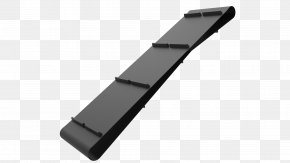The Hidden Costs of Ignoring Rubber Conveyor Belts Maintenance
The Hidden Costs of Ignoring Rubber Conveyor Belts Maintenance
Blog Article

In the world of industrial operations, conveyor belts play a crucial role in ensuring smooth and efficient material handling. Among the various types available, rubber conveyor belts, PVC conveyor belts, and rubber drive belts stand out for their versatility and reliability. However, many businesses often overlook the importance of regular maintenance for these essential components. Ignoring the upkeep of rubber conveyor belts can lead to a cascade of hidden costs that may not be immediately apparent but can significantly impact operations over time.
Neglecting proper maintenance practices can result in premature wear and tear, unexpected breakdowns, and ultimately, costly downtimes. This can disrupt production schedules, affect product quality, and lead to increased operational expenses. Understanding the design, development, and production of rubber conveyor belts, along with their maintenance requirements, is essential for any business aiming to optimize efficiency and minimize costs. By recognizing the hidden costs associated with their neglect, companies can make informed decisions that ensure their conveyor systems run smoothly and efficiently.
Understanding Rubber Conveyor Belts
Rubber conveyor belts are essential components in material handling systems used across various industries. They are designed to transport goods and materials efficiently, ensuring smooth operations in manufacturing, mining, and logistics. The durability and flexibility of rubber make it an ideal choice for these belts, allowing them to withstand heavy loads and harsh environments.
The development and production of rubber conveyor belts involve advanced engineering and careful selection of materials. Manufacturers focus on creating belts that are not only strong but also resistant to wear, abrasion, and chemicals. This attention to design is crucial as it directly impacts the performance and longevity of the belts in their intended applications.
Understanding the dynamics of rubber conveyor belts also includes recognizing their maintenance needs. Regular inspection and upkeep can prevent costly breakdowns and extend the life of the belts. Ignoring maintenance can lead to unforeseen issues that disrupt operations and increase expenses, making it evident that proper care is integral to the overall efficiency of conveyor systems.
Impact of Neglecting Maintenance
Neglecting maintenance on rubber conveyor belts can lead to significant operational inefficiencies. Over time, wear and tear can compromise the integrity of the belt, resulting in increased friction and energy consumption. This not only affects the performance of the conveyor system but also elevates operational costs as more energy is required to move materials. As friction increases, the strain on connected machinery also grows, potentially leading to unplanned downtimes and costly repairs.
In addition to heightened operational costs, the premature failure of rubber conveyor belts can disrupt production schedules. When a belt fails unexpectedly, it halts the entire conveyor system, causing delays in material handling and processing. These interruptions can cascade through the supply chain, affecting delivery schedules and customer satisfaction. The financial implications can be substantial, as lost productivity and delays often translate to lost revenue. Addressing these issues proactively through regular maintenance is far less expensive than managing the fallout from a sudden breakdown.
Finally, the long-term implications of ignored maintenance extend to safety concerns within the workplace. A malfunctioning conveyor belt can pose safety hazards to employees, increasing the risk of accidents and injuries. Ensuring that rubber drive belts and related components are in good working condition is critical for maintaining a safe working environment. Companies that prioritize maintenance not only protect their assets but also safeguard their workforce, fostering a culture of safety and efficiency.
Timing Belt Manufacturers
Best Practices for Maintenance
Regular inspection is crucial for maintaining the performance of rubber conveyor belts, PVC conveyor belts, and rubber drive belts. Operators should conduct visual checks to identify signs of wear, damage, or misalignment. A thorough inspection includes looking for fraying edges, cracking surfaces, and any debris that may be caught in the belt system. Efficient maintenance begins with promptly addressing any issues identified during these inspections to prevent further damage and costly repairs.
Proper cleaning routines are essential to prolong the lifespan of conveyor belts. Dust, debris, and other contaminants can accumulate on the belt surface, leading to reduced efficiency and increased wear. Using non-abrasive cleaning solutions and equipment designed for conveyor belts will help maintain cleanliness without causing damage. Establishing a regular cleaning schedule that aligns with operational demands can significantly enhance the overall performance of the belts.
Finally, ensuring that the belts are properly tensioned is vital for optimal operation. Incorrect tension can lead to slippage, decreased efficiency, and premature wear. It is important to follow the manufacturer's guidelines for tensioning the belts and to regularly check tension levels as part of routine maintenance. Keeping the belts properly aligned and adjusted will not only improve their longevity but also enhance the productivity of the entire system.
Report this page